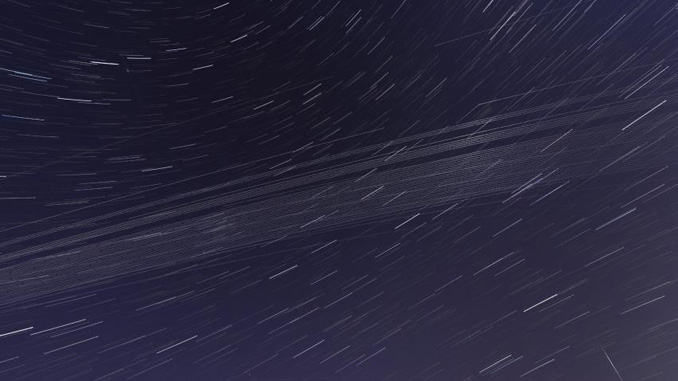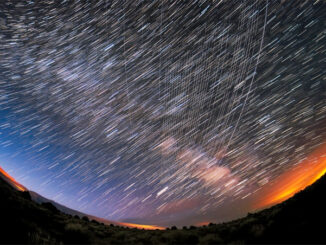
New research indicates rapidly growing numbers of satellites, so called “mega constellations” devoted to space-based internet and other commercial services, are generating more overall light pollution, or skyglow, than previously understood.
An analysis in Monthly Notices of the Royal Astronomical Society: Letters concludes the overall brightness of the night sky could increase by more than 10 percent across a large part of the planet.
“Our primary motivation was to estimate the potential contribution to night sky brightness from external sources, such as space objects in Earth’s orbit,” said Miroslav Kocifaj of the Slovak Academy of Sciences and Comenius University in Slovakia, who led the study.
“We expected the sky brightness increase would be marginal, if any, but our first theoretical estimates have proved extremely surprising and thus encouraged us to report our results promptly.”
The study considered the overall impact of increasing numbers of satellites as well as spent rocket stages and space debris on the general luminance of the night sky as opposed to the effects of individual satellites and the “light trails” they can produce in long-exposure photographs. The researchers developed a model based on the known distributions of sizes and the brightness of known objects in Earth orbit.
“Unlike ground-based light pollution, this kind of artificial light in the night sky can be seen across a large part of the Earth’s surface,” said John Barentine, director of public policy for the International Dark-Sky Association and a study co-author. “Astronomers build observatories far from city lights to seek dark skies, but this form of light pollution has a much larger geographical reach.”
The United States’ Federal Communications Commission holds license applications for more than 81,000 satellites for SpaceX’s Starlink program, OneWeb and a proposed constellation of internet relay satellites planned by Amazon. SpaceX has launched 1,385 Starlinks as of 1 April and OneWeb has put up 146.
The authors of the new study note that while SpaceX and other satellite builders are making good-faith efforts to minimise the brightness of their spacecraft, the glow of the night sky will continue to increase.
“The cloud of artificial objects orbiting the Earth, composed of both operational and decommissioned satellites, parts of launch vehicles, fragments, and small particles, with characteristic sizes ranging from micrometers to tens of metres, reflect and scatter sunlight toward ground-based observers,” the researchers write.
“When imaged with high angular resolution and high sensitivity detectors, many of these objects appear as individual streaks in science images. However, when observed with relatively low-sensitivity detectors like the unaided human eye, or with low-angular-resolution photometers, their combined effect is that of a diffuse night sky brightness component, much like the unresolved integrated starlight background of the Milky Way.”
They conclude estimates of this “newly recognised skyglow” may have already reached a zenith threshold of 10 percent above the luminance of a natural night sky. That exceeds the International Astronomical Union’s light pollution “red line” for astronomical observatory sites.
“Future satellite mega-constellations are expected to increase significantly this light pollution source,” the researchers conclude.



